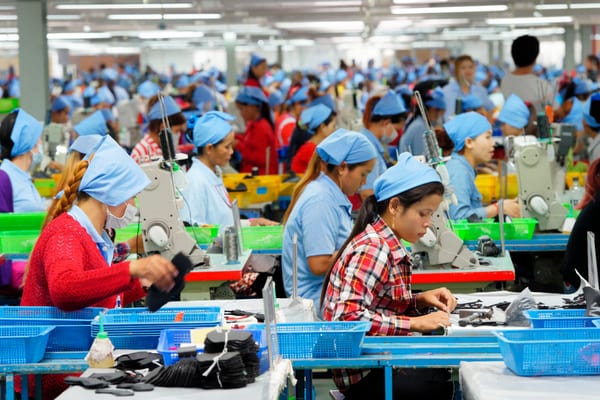Responsible Recruitment and Tackling Forced Labour
14 June 2016

The International Labour Organisation (ILO) defines forced labour as:
“all work or service which is exacted from any person under the menace of any penalty for which said person has not offered himself voluntarily.”
Almost 21 million people are victims of forced labour – it’s a global phenomenon existing in every region in the world and in every type of economy, whether industrialised, developing or in transition. Forced labour affects both international and domestic markets, and no sector or industry can be considered immune or untainted. Migrant workers and indigenous people are particularly at risk of forced labour, with the most vulnerable victims including women and children.
A recent example of how modern slavery can be found within supply chains comes from a Guardian investigation into the Thai prawn fishing industry. The investigation found that
“large numbers of men bought and sold like animals and held against their will on fishing boats off Thailand are integral to the production of prawns… sold in leading supermarkets around the world.”
New legislation, such as the UK Modern Slavery Act, is a welcome start to what we hope will be a wider, global legislative push towards stamping out modern slavery. The Act includes the Transparency in Supply Chains Clause, which now requires any company with a turnover of more than £36 million that “supplies goods and services” and “carries on a business, or part of a business, in any part of the UK” to publish an annual slavery and human trafficking statement.
This puts the issue of forced labour squarely on the boardroom agenda, and we have certainly seen businesses pay increasing attention to preventing forced labour in their supply chains as a result.
In particular, many companies are increasingly committed to responsible recruitment practices. But with large, complex supply chains spreading across multiple tiers and continents, it can be a huge challenge to raise standards and stamp out forced labour.
Sedex is a global non-profit membership organisation and home to the world’s largest collaborative platform for sharing data on supply chains, used by more than 38,000 members in over 150 countries. For our members, finding and preventing forced labour in their supply chains is a key priority. To support them, we recently released new guidance on how to spot the signs of actual, likely or possible cases of forced labour, for both auditors and audit readers. The guide is freely available both to our members and more widely to all businesses and auditors. Below are the top factors highlighted in the guide, which could be indicators of deceptive or coercive recruitment:
- “Workers are being fraudulently charged fees for food, clothing, transportation (bus or plane tickets and boat rides), health checks, work documentation and/or supplies as part of their recruitment.” This is a strong indicator of deceptive or coercive recruitment practices. These practices lead many migrant workers into heavy debt to secure a job and can increase vulnerability to exploitation, including forced labour. Employers should bear the full costs of recruitment and placement.
- “Workers are required to sign blank papers, resignation letters etc., which could lead to workers being tied to terms and conditions of employment they did not consent to.” This is also a strong indicator of deceptive or coercive recruitment practices. The worker could be in a forced labour situation if they have entered into a job through deception about the type/terms for work, indicating a lack of consent. Also, if the worker’s freedom to leave the employment at any time is restricted in any way the worker would be in a forced labour situation.
- “Key employment terms and conditions are systematically not provided prior to employment to workers in understandable writing and in their own language via letter/agreement/contract as required by law.” This is a possible indication of deceptive or coercive recruitment practices. The ILO states all workers should have written contracts, in a language that they easily understand, specifying rights with regard to payment of wages, overtime, retention of identity documents and other issues related to preventing forced labour.
As well as highlighting practices and indicators in the recruitment process which result in someone being misled or coerced into employment, the guide also includes two other sections which together cover the employment cycle: the second section is on indicators that vulnerable workers are controlled, isolated, threatened, intimidated in order to coerce; the third section covers practices which result in workers being trapped through debt bondage, withholding wages, and unreasonable deductions, so workers are left with little or no pay, as well as other practices that prevent or restrict a workers ability to quit. When identifying these factors, the guide advises that protecting possible victims and capturing and documenting evidence for follow-up should be paramount to any key steps to be taken when forced labour is suspected or found.
These indicators will be included in the next version of SMETA, one of the world’s most widely-used audit formats, in order to better support auditors in identifying forced labour and deceptive or coercive recruitment practices.
Of course, auditing is just one of many tools in the box for companies committed to responsible recruitment throughout their supply chain. It must be used alongside engagement between brands and their suppliers to confront the systemic issues and existing business models which create risks for both workers and to sustainable business.



